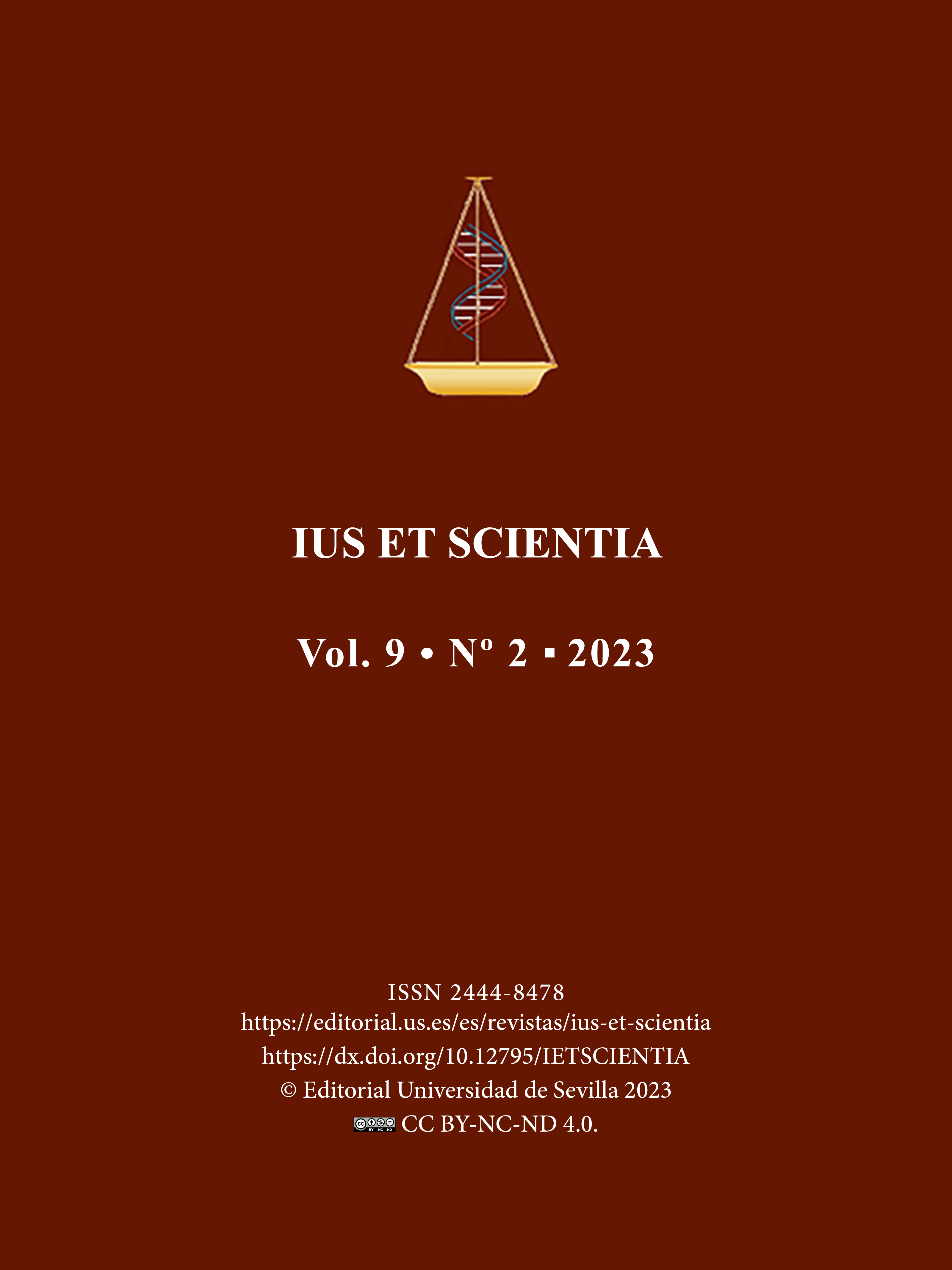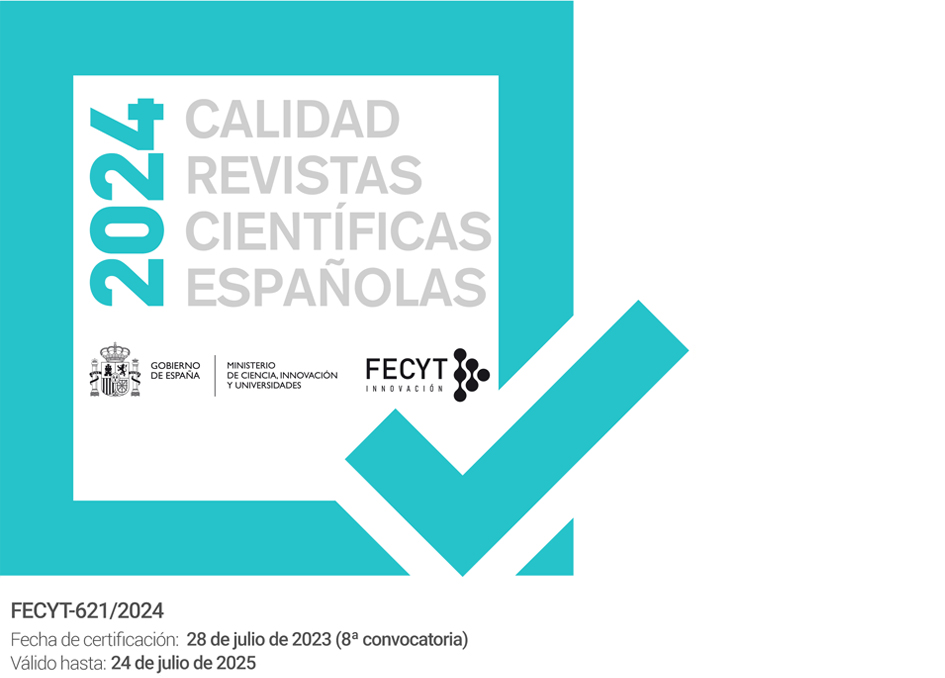The role of artificial intelligence in combating cyber terrorism
DOI:
https://doi.org/10.12795/IESTSCIENTIA.2023.i02.10Palabras clave:
Cyber terrorism, Artificial intelligence technology, Combating, PreventionResumen
Este estudio tiene como objetivo identificar los efectos de la tecnología en la delincuencia, ya que es un arma de doble filo, en la que puede ayudar en la comisión de delitos, sin embargo, también contribuye a prevenirlos, detectarlos y reprimirlos. Además, el desarrollo tecnológico ha tenido dos efectos destacados, uno de ellos negativo, que se manifestó en los peligros que amenazan la seguridad de los Estados y de los individuos, en particular el fenómeno del terrorismo, cuyo peligro se ha incrementado constantemente con la tecnología.
Por lo tanto, el método de gestión del terrorismo se ha vuelto más sofisticado, ya que los grupos terroristas utilizan el ciberespacio para lanzar ataques utilizando Internet y programas complejos, por lo que el terrorismo ha pasado de ser tradicional basado en el poder duro al ciberterrorismo basado en el poder blando. En cuanto al impacto positivo del desarrollo tecnológico, está representado en la tecnología de inteligencia artificial utilizada en la prevención y control de delitos, incluidos los delitos de ciberterrorismo.
Descargas
Citas
ABDEL-SADIQ, A. (2009). Cyber Terrorism: The Power in International Relations, a New Pattern and a Contrasting App. Cairo: Center for Political and Strategic Studies.
AL KAYALI, A. W. (1994). Political Encyclopedia, part 7. Beirut: the Arab Foundation for Studies and Publishing.
AL-SHARQAWI, M. A. (1996). Artificial Intelligence and Neural Networks (éd. 1). Egypt: The Modern Egyptian Office Press
AL-ZUBAIDI. (1987). Taj al-’arūs min jawāhir al-Qāmūs (éd. 2). (A. Hilali, Éd.) Kuwait.
AL-HAMDANI, B. H. (2008). Al-Bakry, Riyad Hamza, The reality of development in light of scientific progress and the concept of artificial intelligence. Journal of Comprehensive Management Accounting, College of Management and Economics.
AL-HUWAIDI, O. (2011). Combating Terrorism Crimes. Amman: Dar Wael Li Al Nasher.
AL-MAWASH, D. J. (2017). The Crime of Information Espionage (a comparative study) (éd. 1). Egypt: Longitudinal Center for Scientific Studies and Research.
AL-MUKARRAMAH, T. d. (5-10/1/2002). (Makkah Al-Mukarramah: the Islamic Fiqh Council of the Muslim World League in its sixteenth session.
AL-SALMI, A. A.-R. (1999). Information Systems and Artificial Intelligence. Amman: Dar Al-Manhaj for Publishing and Distribution.
ALEJANDRO, C. A. (2012). The Empire of Terror (éd. 1). (W. Ibrahim, Trad.) Beirut: Publications Company for Distribution and Publishing.
BANA, D. (2020, January 14). Consulté le November 16, 2021, sur https://mawdoo3.com
BEN AMROUCHE, F. (2018). Electronic Terrorism: A Study in Conceptual and Dimensional Problems. Algerian Journal of Social and Human Sciences, 8(2).
CAROLE, M. (2019). Laurent Guille, Intelligence Artificielle Et Cybersécurité. Wavestone.
DILEK, S., ÇAKIR, H., & AYDIN, M. (2015). Applications of Artificial Intelligence Techniques to Combating Cyber Crimes: A Review. International Journal of Artificial Intelligence & Applications (IJAIA), 6(1).
HAIDER, S. A.-B., & Dr. MAHMOUD, H. A.-H. (2014). Technology and Information Systems in Contemporary Organizations “A Technological Administrative Perspective.” Cairo: Published by Mahmoud Hassan Jomaa Foundation.
IBN FARIS. (1999). A Dictionary of Language Standards (éd. 1). Beirut: Dar al-Kotob al-Ilmiya.
KATHLEEN, M. (2019, October 9). Predicting Attacks: Opportunities and Risks of Using Artificial Intelligence in. Récupéré sur https://futureuae.com/ar/Mainpage/Item/5022/%D8%A7%D9%84%D8%AA%D9%86 %D8%A8%D8%A4-%D8%A8%D8%A7%D9%84%D9%87%D8%AC%D9%85%D8%A7%D8%AA.
KATHLEEN, M. (August 2019). Artificial Intelligence Prediction And Counterterrorism. Britain: Chattam House.
KHAZA’LEH, S. (2015, August 15). The Characteristics of Artificial Intelligence. Consulté le November 16, 2021, sur https://mawdoo3.com.
MUSTAFA, M. M. (2009). Electronic Terrorism (legal, security, psychological, and social study) (éd. 1). Cairo: Egyptian National Books and Documents House.
OLIVIER, T. (2017, June 6). Artificial Intelligence Will Save Us From Cyberterrorism. Consulté le August 12, 2020, sur https://Www.Telerama.Fr/Medias/L-Intelligence-Artificielle-Va-Nous-Sauver-Du-Terrorisme‘159806.Php.
sans référence. (s.d.).
SHADI, A.-W., Al-GHITAN, I., & YAHYA, S. (s.d.). Opportunities and Threats of Artificial Intelligence in the Next Ten Years.
SHAFIQ, N. (2016). The Impact of Cyber Threats on International Relations: A Study in the Dimensions of Cyber Security (éd. 1). Cairo: al-Maktab al-‘Arabī lil-Ma‘ārif.
SHARQI, S., & Gharib, H. (2020). Electronic Terrorism and the Transformation of the Concept of Power. Al-Bahith Journal for Academic Studies,, 7(2).
SHEIKH, H. (2018). The role of artificial intelligence in managing the electronic customer relationship of the Algerian People’s Credit CPA. Academic Journal of Human and Social Studies,(20).
SULEIMAN, Y. A.-F. (s.d). Artificial intelligence. Syria: Al-Badr Magazine.
The Arabic Language Academy. (s.d). The Intermediate Lexicon. (I. Mustafa, & others, Éds.) Turkey: the Islamic Library.
TOLBA, D., & FAHMY, M. (2005). Computer Knowledge Department. Alexandria: Modern Egyptian Office Press.
VERRE, D. (2011). Cyberspace And Actors Of Cyberconflict (Edition Bermes Science ed.). Paris: La Voisier.
VICTOR, M.-S., KENNETH, C., & BIG, D. (2013). A Revolution That Will Transform How We Live. Work And Think (London, John Murray).
WAQUAF, A.A. (2006). Combating Terrorism Between Politics and Law. Algeria: Dar Al-Kheldonia Publishing and Distribution.
Descargas
Publicado
Cómo citar
Número
Sección
Licencia
Derechos de autor 2023 Nadjia Madaoui

Esta obra está bajo una licencia internacional Creative Commons Atribución-NoComercial-CompartirIgual 4.0.
Aquellos autores/as que tengan publicaciones con esta revista, aceptan los términos siguientes:- Los autores/as conservarán sus derechos de autor y garantizarán a la revista el derecho de primera publicación de su obra, el cuál estará simultáneamente sujeto a la Licencia de reconocimiento de Creative Commons que permite a terceros compartir la obra siempre que se indique su autor y su primera publicación esta revista.
- Los autores/as podrán adoptar otros acuerdos de licencia no exclusiva de distribución de la versión de la obra publicada (p. ej.: depositarla en un archivo telemático institucional o publicarla en un volumen monográfico) siempre que se indique la publicación inicial en esta revista.
- Se permite y recomienda a los autores/as difundir su obra a través de Internet (p. ej.: en archivos telemáticos institucionales o en su página web) antes y durante el proceso de envío, lo cual puede producir intercambios interesantes y aumentar las citas de la obra publicada. (Véase El efecto del acceso abierto).




